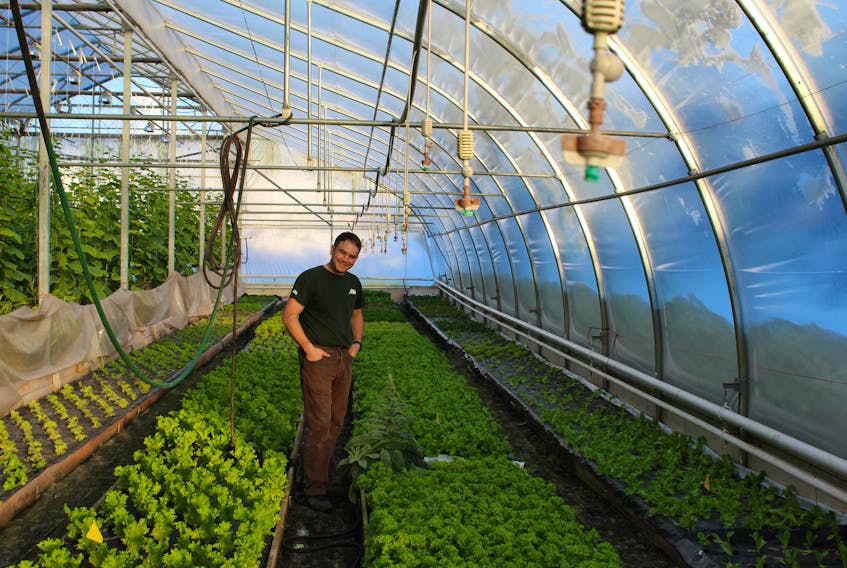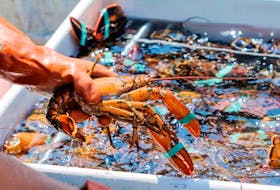SPRING VALLEY, P.E.I. - The ongoing romaine lettuce contamination scare in Canada has at least one local farmer encouraging Islanders to seek out local produce.
“The more … we can know about where our food comes from, [the more] we can feel confident that it’s safe, more nutritious, fresher and - of course - we can support our local community, local economy,” said Spring Valley farmer Marc Schurman.
Schurman mostly grows tomatoes and cucumbers for stores around the Maritimes, but he has a section in his greenhouses set aside for leafy greens. He grows around 50 lbs of lettuce a week this time of year, in the summer he ups production to around 120 lbs.
In Canada, as of Nov. 23, there have been 22 confirmed cases of E. coli illnesses traced to romaine lettuce. People became sick after eating romaine at home, as well as in prepared salads purchased at grocery stores, restaurants and fast food chains.
Agencies in Canada and the United States are investigating where the bad lettuce came from. The strain causing the most recent outbreak is the same strain of E. Coli O157 that made people sick in the fall of 2017. In that case, the source of the outbreak was not found, but the similarity points to a reoccurring source of contamination, said a public health notice from the Canadian government.
“When situations like this occur, there tends to be a bit of a media sensation around it, but consumers can be very confident that the food we grow in Canada and the food we consume in Canada is the safest in the world, very low risk, and they should have confidence in the products that they purchase.”
-Jeff Hall
Jeff Hall is the food safety specialist with the Canadian Produce Marketing Association (CPMA).
The CPMA represents over 860 businesses in the fresh produce industry – from farmers to retailers.
“We all realize it is an integrated market and what happens in the U.S. affects us up here,” he said.
Most of the romaine sold in Canada this time of year is from the U.S. or Mexico. But, like Schurman, some Canadian growers grow leafy greens in green houses for local markets.
“The romaine in question is coming through from, presumably, large farms in California through the supply chain,” said Schurman.
“When people bring it home, they maybe don’t remember what it said on the bag, but if they buy it from us, they know exactly where it came from and we know we haven’t had the kind of problems that some of this other lettuce had.”
To find out where your lettuce is from look at the wrapper to see the country of origin, or, if there’s no packaging, just ask, said Hall.
“Talk to your grocer, get a good idea where they’re getting their products from and consumers can make their decision that way.”
So far, all the contaminated romaine is from the U.S.
“Whenever you’ve got a product grown outside, subjected to the elements, there’s always a possibility – and the risk is very, very low – that some type of contamination may occur," Hall said. “It could come from a water source that’s been contaminated, it could come from animals or birds that walk across the field.”
Canada has very safe fresh fruits and vegetables, he said. Producers have worked to develop and implement a safe handling program recognized around the world.
“When situations like this occur, there tends to be a bit of a media sensation around it, but consumers can be very confident that the food we grow in Canada and the food we consume in Canada is the safest in the world, very low risk, and they should have confidence in the products that they purchase,” said Hall.
Schurman can vouch for his vegetables and urges people to eat local.
“When you don’t know where your food comes from, and it’s coming from a quarter or a half-way around the world, it’s hard to feel secure and safe that it was produced in a way that you feel comfortable with.”
Related:









